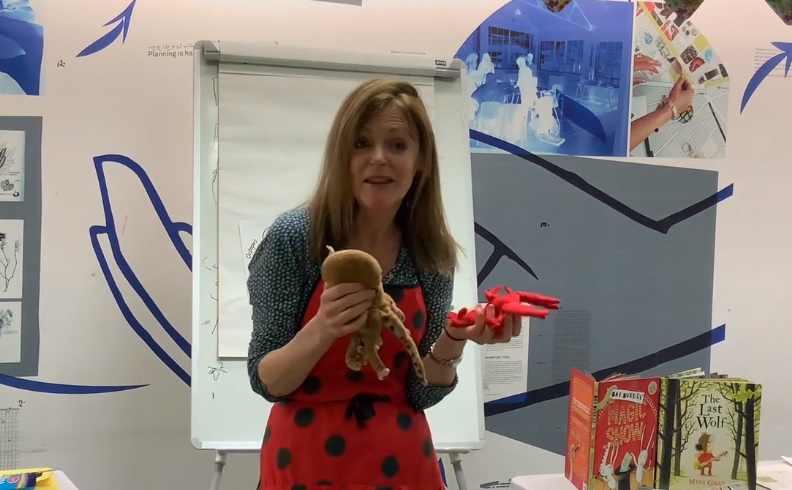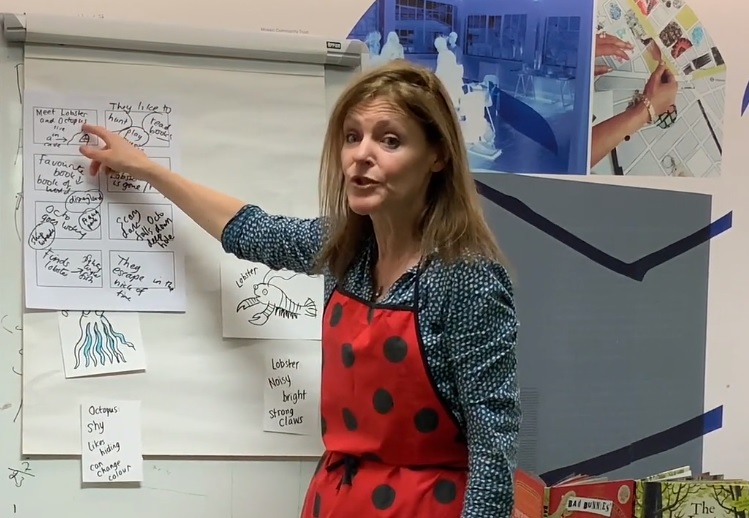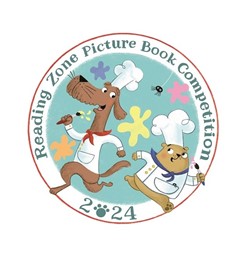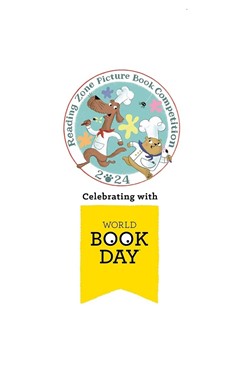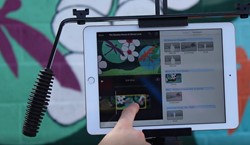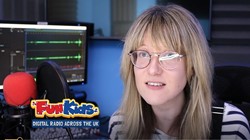Create a Picture Book Competition 2024
-
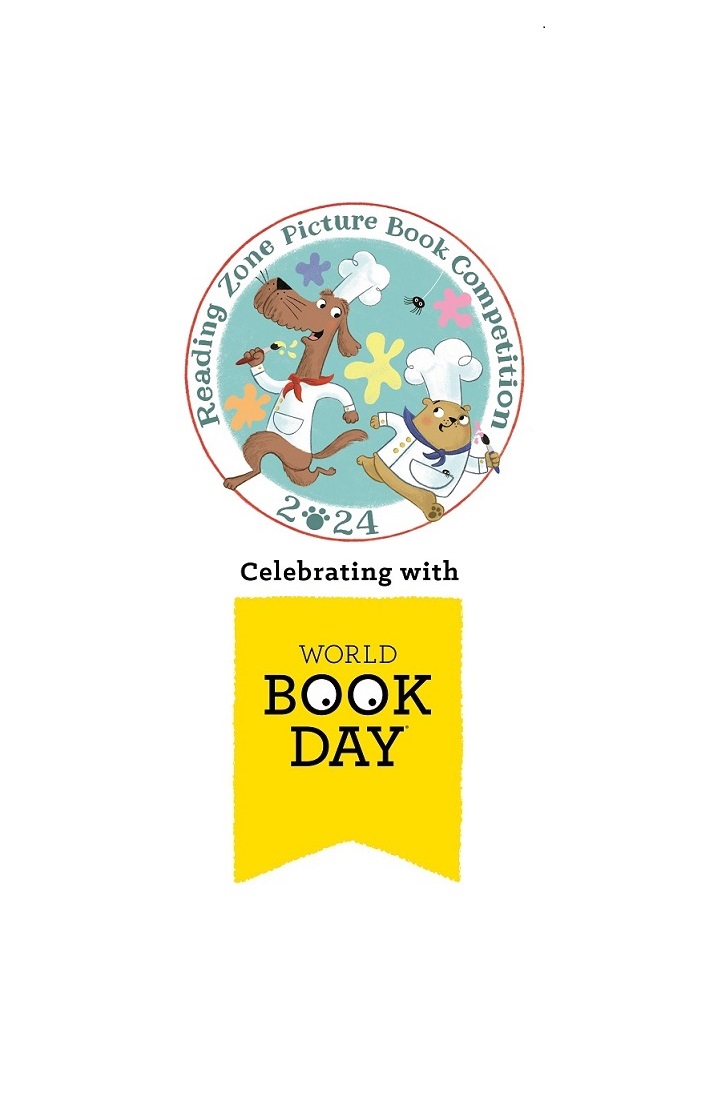
Winners of the ReadingZone Picture Book Competition 2024 announced
We are thrilled to announce the winners of the ReadingZone Picture Book Competition 2024, judged by Steven Lenton, illustrator of the bestselling Shifty McGifty and Slippery Sam series! For this competition, children and young people were challenged to write and illustrate their own picture book.
The competition categories include Young Creators (4-7 years); Primary (7-11 years); and Secondary (11+ years). Prizes include £200 of books for each of the winning schools, plus a book bundle for the individual creators. The overall winner will receive a free online author event for their school.
Follow the competition on Twitter @ReadingZone / #PictureBookComp
-
Competition Guidelines
Entrants: ReadingZone's annual picture book competition is open to children and young people aged four to 18 years in schools, libraries and homes.
Categories: These include Young Creators (ages four to six years); Primary (ages seven years plus) and Secondary (ages 11 years plus).
Picture Books: Picture books could be made by individuals, groups or whole classes, using any media and covering any subject or theme, and up to 24 pages in length.
The competition closed on Friday 19th April 2024.
Shortlists for the ReadingZone Picture Book Competition 2024
Early Years Shortlist:
The Sun Gem Dragons by Edie, 7
Rose and the Abandoned Cottage, by Grade 1 Diamond, Brightside High School, Pershawar, Pakistan
Super Stacy Survival by Vinni, 6
The Hegehug by Emily, 7
Peace Never Lasts Class entry from Canterbury Cross Primary School
The Marshmallow Who Was Afraid of Getting Toasted by Grace, 7
Primary Shortlist:
Power Chicks and the Magic of Fear by Maya, 9
Get a Pizza the Action by Niamh, 11
Human Again by Louis, 10
Ice Cream with Sprinkles by Amelia, 10
The Lost Library Toys by Azra and Sophia, Fairways Primary School
Michael Monster by Class 4E, age 7-8, Canterbury Cross Primary School
My Brother the Bulldog by Liv, 11
How to Build an Empire by Helen, 11
The Sloth and the Girl by Seren, 10
The Twin Switch, by Rachael, Safina and Pheobe, 10
Charlie the Squirrel Doctor, by Leo, 9
Secondary Shortlist:
Night and Day by Tyler, 17
The Boy with the Power of a Thousand by Ethan, 14
How to Be a Weird Bug by Raquel, Santiago and Pablo, 11
How Do Aliens Have Babies by Daniel, 13
How Captain Cookie Crumble Became Captain by Arjun, 11
A Girl, a Cat and Kindness by Kiera by Imogen, Rie and Sofia, 11, 12
-
The Winners of the ReadingZone Picture Book Competition 2024
We were delighted by the high standard of picture books sent by young creatives, and by the quality of the stories and illustrations we have seen - stories that are funny or sad, keep you guessing until the last page and stories that reflect the everyday issues and challenges children might face. The picture books we have read have been inventive, perceptive and beautifully produced and it has been hard to choose the three winners.
We are so pleased to be able to announce each of the the winners and shortlists for the ReadingZone Picture Book Competition 2024, with commentary from Steven Lenton; press the link to read the winning picture book.
ReadingZone Picture Book Competition 2024 Winners
Young Creator Category: The Hegehug by Emily, aged 7
Our judge Steven Lenton said: "Adorable, simple and clever story with gorgeous illustrations."
Runner-Up: Super Stacy Survival by Vinni, aged 6
"Hilarious and brilliant voice - I wanted to read the sequel!"
Runner-Up: The Sun Gem Dragons by Edie, aged 7
"Great world-building and eye-catching illustrations and an important theme to tackle."
Primary Category Category: Ice Cream with Sprinkles by Amelia, aged 10
Steven Lenton said: "My absolute favourite. I loved the refrain, the cheeky dry sense of humour and all the characters look terrific - I would love to see this worked up into an actual picture book!"
Runner-Up: Get A Pizza The Action by Niamh, aged 11
"This would make such a cool graphic novel series and Niamh has great drawing skills and ideas - and a wonderful sense of humour!"
Runner-Up: Charlie the Squirrel Doctor by Leo, aged 9
"Absolutely hilarious, dead pan genius here!"
Secondary Category: How to Be a Weird Bug by Raquel, Santiago and Pablo,11
Steven Lenton said: "I love that this is created by a talented trio! A really clever way of showing that we don't all fit into specific rules and can still have a great time, even if we aren't deemed to be perfect."
Runner-Up: Night and Day by Tyler, aged 17
"I LOVED the character design, colours and layouts of this one!"
Runner-Up: How Captain Cookie Crumble Became Captain by Arjun, aged 11
"Great character here, and very, very funny!
Overall Winner: Ice Cream with Sprinkles by Amelia, aged 10
Steven Lenton said, "The humour, the character designs and the wit combined with a great imagination and layouts made this my absolute winner!"
ReadingZone editor Caroline Horn said: "Well done to all our winners, and to everyone who created and submitted a picture book for the competition. We were blown away by the standard of entries to this year's competition and it was hard to choose the shortlists. Thank you to each and every young author and illustrator who took part."
The 2023 competition was judged by author and illustrator Elys Dolan (How to Make a Picture Book, Mr Bunny's Chocolate Factor). See the Results of the ReadingZone Picture Book Competition 2023
